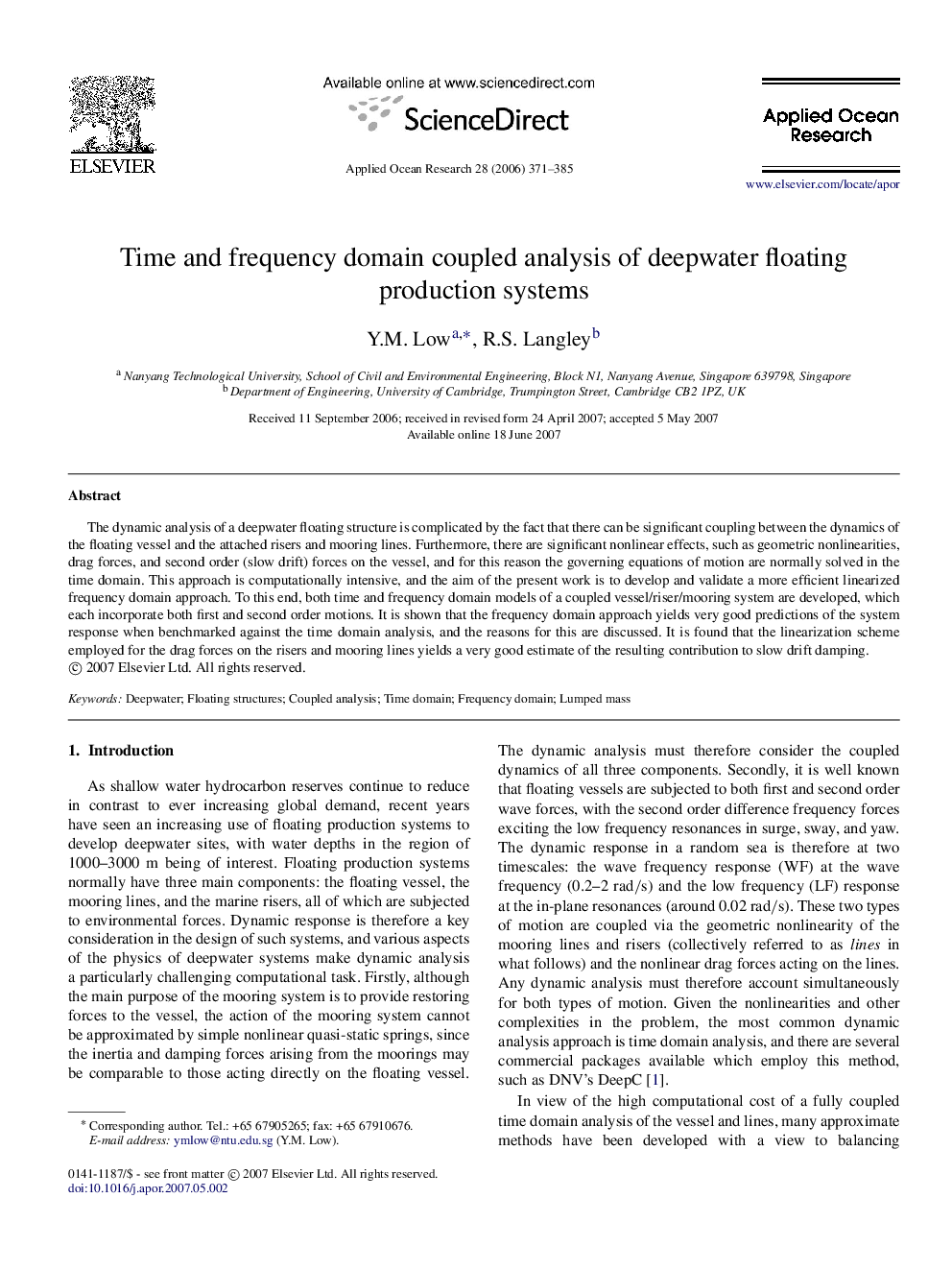| Article ID | Journal | Published Year | Pages | File Type |
|---|---|---|---|---|
| 1720493 | Applied Ocean Research | 2006 | 15 Pages |
The dynamic analysis of a deepwater floating structure is complicated by the fact that there can be significant coupling between the dynamics of the floating vessel and the attached risers and mooring lines. Furthermore, there are significant nonlinear effects, such as geometric nonlinearities, drag forces, and second order (slow drift) forces on the vessel, and for this reason the governing equations of motion are normally solved in the time domain. This approach is computationally intensive, and the aim of the present work is to develop and validate a more efficient linearized frequency domain approach. To this end, both time and frequency domain models of a coupled vessel/riser/mooring system are developed, which each incorporate both first and second order motions. It is shown that the frequency domain approach yields very good predictions of the system response when benchmarked against the time domain analysis, and the reasons for this are discussed. It is found that the linearization scheme employed for the drag forces on the risers and mooring lines yields a very good estimate of the resulting contribution to slow drift damping.
